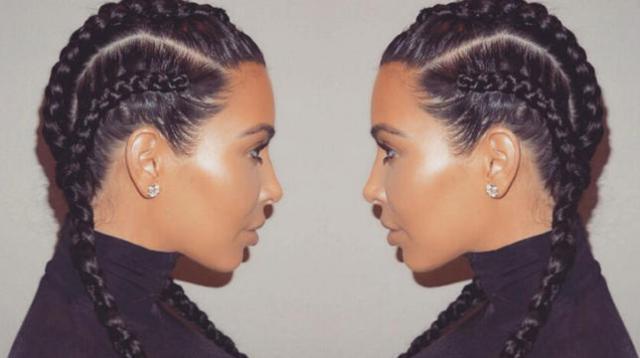You Need My Permission to Come For My Culture!
Original article featured on LinkedIN
5 Principles to Help Business Leaders Avoid Cultural Appropriation Fiascos
• Kim Kardashian wearing cornrowed braids is cool. Kim Kardashian wearing cornrowed braids, and getting credit for making them popular, and renaming them boxer braids is not so cool. (A point of clarification, Kim neither claimed to make them popular nor did she rename them).
• Although the late Chuck Berry was Rock and Roll’s innovator, Jerry Lee Lewis said of himself, “There was no pure rock and roll before Jerry Lee Lewis.” Also, fans declared Elvis, the King of Rock and Roll. Over the years, Berry’s innumerable and influential contributions to rock and roll often took a back seat to Jerry Lee and Elvis who have been credited with creating this music genre and putting it on the map.
• There are a growing number of White rappers who mirror Black Hip-Hop culture, and who are creating opportunities and spaces with predominantly white audiences. In fact, in 2014, White rappers Macklemore and Ryan Lewis won 4 Grammys including best rap album, beating out Kendrick Lamar and Jay-Z. The win poured salt into the Black community’s wounds of misappropriated Black Hip Hop culture. This was evident by the social media feud between White rapper Iggy Azalea and Black rapper Azelia Banks that lasted for weeks.
Wearing a hairstyle, or the use of art, music, fashion, traditions, symbols and language that has been a part of one culture and their history, by members of another culture, who take credit for those cultural elements, and claim it as their own by denying or ignoring the people who created it… is cultural appropriation.
“So, what’s the big deal? Isn’t imitation the sincerest form of flattery?” you may ask.
Imitation is the sincerest form of flattery. Practicing a culture is cultural appreciation. So it’s important to understand what the boundaries of appreciation and appropriation are and the levels of sensitivities that are associated with different ethnic groups.
From a Black perspective, cultural appropriation has been about the lack of respect and the loss of financial opportunities. From a mainstream perspective, there’s a belief that Black people are just too sensitive.
Even though it’s been weeks following the Pepsi, Shea Moisture and Nivea marketing blunders, I’m still getting asked “the question” from a number of colleagues and friends: “Are Black people overly sensitive about mainstream messages that include them?” My answer is no! Sensitive: yes. Overly sensitive, absolutely not! Black people and ethnic consumers in general, tend to analyze communications and marketing messages that focus on people who look like them with a lot more scrutiny than mainstream consumers. They are watchful for stereotypes, and messages that (unintentional or not) tend to devalue and misappropriate their culture.
Given that within the next 10 years, the majority of business growth and opportunity will come from ethnic consumers, it’s unfathomable that in 2017 America, many business leaders still don’t value the importance of garnering insights from and being sensitive to ethnic consumers’ sensitivities. It’s no wonder then, that when unraveling communication fiascos, we see a backdrop of exclusion, arrogance, denial, naiveté and fear.
Getting a segment’s approval is not about asking a question that delivers a yes or no response. It’s the assurance of obtaining an authentic connection with that audience. Cultural appreciation is that golden nugget that can be adapted across all segments. Yet, without deeper insights, the adaptation can be tricky because ethnic culture is personal.
Here are five ways of getting permission and garnering cultural appreciation from ethnic consumers:
1. Hire the right talent. Employing the right talent means placing people on your team who live, celebrate and fully experience being a person of color in America.
2. Practice Real Collaboration. When diverse talent is invited in the room and to the table, the opportunity fosters collaboration. Genuine collaboration of diverse talent is where cultural ideas, opinions, and insights are shared and received across both aisles. The outcome also provides content for a great engaging backstory.
3. Come correct. Give credit where credit is due. This statement speaks for itself. Do it openly, authentically and proudly every chance you get. If there are financial opportunities, step up share the benefits. That’s integrity and leadership.
4. Invest in relevant research. Business leaders are realizing that “big data” aren’t delivering the “Why?” The challenge is to include more qualitative research in the mix, assemble proper representation of segments, meet these segments where they are, and have a research team who understands cultural nuances.
5. Engage the audience via a call to action. Tuwisha Rogers, VP Strategic Partnerships at Urban One Media (formerly Radio One), shared keen insights about getting permission and said this: “It is not enough to have pretty imagery and entertainment in campaigns today. Consumers are smart and informed more than ever before. Companies need to engage audiences with a tangible call to action, to empower them and make it their own. Likewise, advisers need to be sincerely invested to make good on the call.”
Fixing the problem of cultural appropriation requires practice and commitment. Being aware of the thin line that separates us from understanding and connection is key. When adapting cultural insights and nuances as part of your brand persona, affirm your respect for the segment and culture from which you are borrowing.



